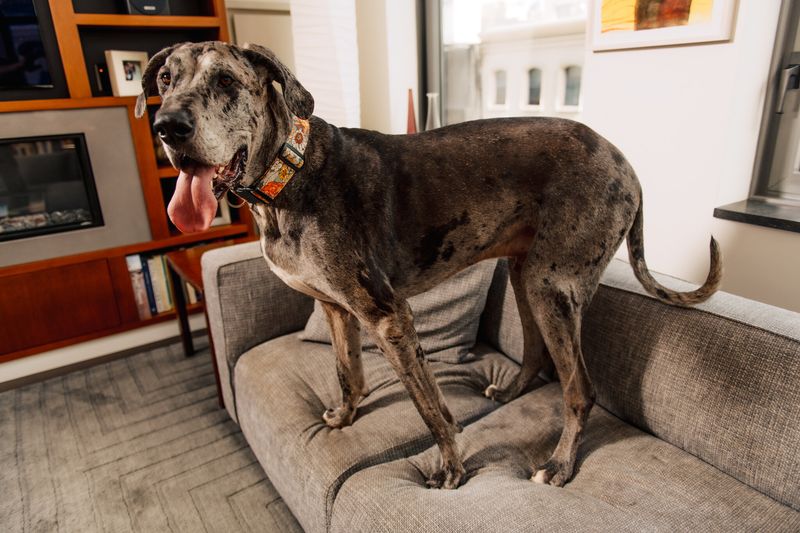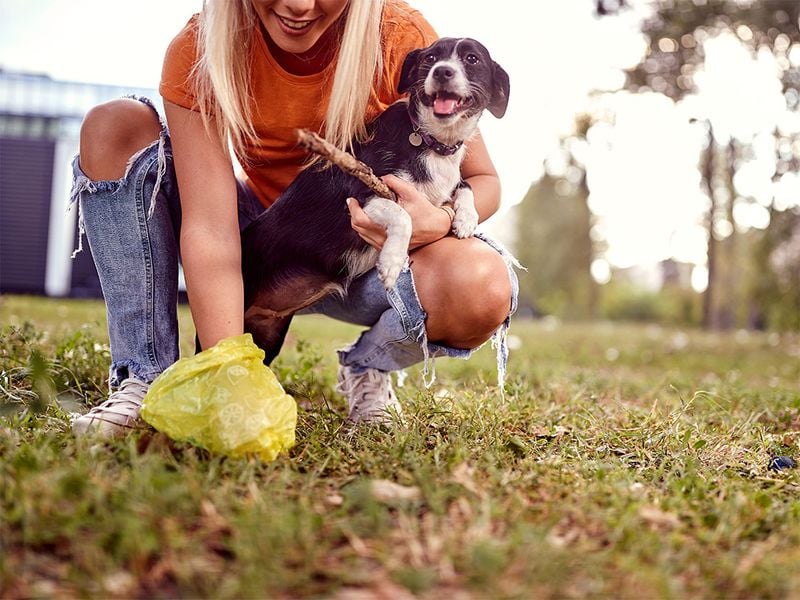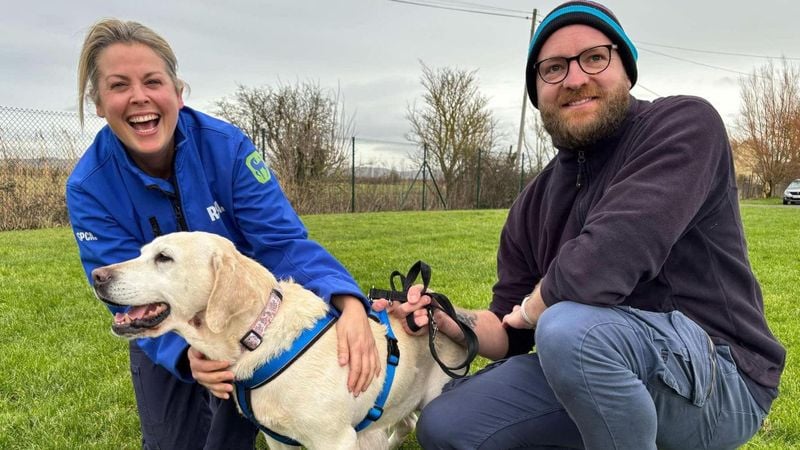Living with a dog in the heart of the city comes with its own set of challenges that suburban pet owners might not fully grasp.
From dodging crowded sidewalks to handling overly curious neighbors, city dogs and their humans face daily tests that push their patience and bonds.
After years of navigating the hustle and bustle of Manhattan with my own furry companion, I can tell you—these struggles are an essential part of the New York dog owner experience.
1. Limited Space for Exercise

My 70-pound Retriever just demolished another lamp while attempting his version of zoomies in our 600-square-foot apartment. The wall-to-wall obstacle course of furniture provides little room for proper exercise, turning our living space into a canine parkour arena.
Apartment dogs often develop pent-up energy that manifests in destructive behaviors or excessive barking. Finding creative solutions becomes essential—hallway fetch sessions, stairwell workouts, or early-morning park visits before crowds appear.
Weather complications add another layer of difficulty when blizzards or heatwaves make outdoor adventures impossible. Smart toys, puzzle feeders, and indoor agility gear are great ways to keep your pup active and mentally sharp when you can’t get outside.
2. Noise Sensitivity

Sirens wailing at 3 AM can transform your dog into a howling banshee, convinced they’re alerting you to impending doom. City soundscapes create unique challenges for noise-sensitive dogs who never signed up for constant construction, traffic, and the unpredictable chaos of urban life.
Many NYC dogs develop anxiety from the relentless auditory assault. Thundershirts, white noise machines, and gradual exposure training become essential tools in the urban dog owner’s arsenal. Creating sound-dampened safe spaces within your apartment helps provide relief.
Neighbors complaining about barking adds another layer of stress. Building good relationships with those sharing your walls becomes as important as training your dog to distinguish between threatening and harmless sounds.
3. Breed and Size Restrictions

“Your application looks perfect, but we don’t allow dogs over 25 pounds.” These dreaded words have sent me apartment hunting for months longer than necessary. Finding pet-friendly housing in NYC feels like winning the lottery—especially with larger breeds or those unfairly labeled as “aggressive.”
Weight limits of 20-30 pounds eliminate most medium-to-large dogs, regardless of their actual behavior or training. Building policies often ban entire categories based on outdated stereotypes rather than individual temperament. The result? Countless wonderful dogs end up in shelters when owners can’t find accommodating housing.
Negotiating with landlords sometimes works if you can provide references, training certificates, or pet insurance. Pet résumés showcasing your dog’s good behavior might seem ridiculous, but they’ve helped many NYC dog owners secure housing.
4. High Veterinary Costs

The bill for my pup’s minor paw infection last month nearly caused heart palpitations—$350 for something that probably costs half elsewhere! NYC veterinary care carries premium pricing that reflects the city’s overall cost of living, creating significant financial strain for pet owners.
Emergency clinics charge even steeper rates, with after-hours visits easily exceeding $1,000 before any actual treatment begins. The density of dogs also means more exposure to illnesses, increasing the frequency of necessary vet visits compared to suburban or rural settings.
Pet insurance becomes almost mandatory, though policies often exclude common urban-specific issues like rat poison exposure or stress-related conditions. Setting aside dedicated pet emergency funds and researching more affordable options in neighboring boroughs can help manage these astronomical costs.
5. Limited Access to Pet-Friendly Spaces

“No Dogs Allowed” signs haunt my daily existence. Despite New York’s reputation as a dog-friendly city, the reality involves navigating a complex patchwork of restrictions that limit where your furry friend can accompany you. Seasonal beach bans, time limits in parks, and the no-dogs-allowed rule at most stores and restaurants make it a constant challenge to figure out where to go.
The few truly dog-friendly spots end up packed, turning into overcrowded hangouts where every city dog owner shows up. All these dogs in one place can lead to problems—territorial disputes, stressed-out staff, and a higher risk of spreading diseases.
Planning any outing with your dog requires exhaustive research and backup plans. I’ve learned to map dog-friendly routes through the city, identifying emergency rest spots, water sources, and shade areas. The mental load of this constant planning adds significant stress to city dog ownership.
6. Pet Waste Management

Nothing tests your devotion like bagging warm poop on a freezing January morning while balancing coffee and trying not to make eye contact with passing strangers. The daily ritual of waste collection becomes exponentially more challenging in a city without convenient disposal options or private yards.
Carrying filled bags for blocks until finding a trash can transforms simple walks into unpleasant expeditions. Summer heat makes the smells on walks incredibly intense.
Finding the right spot for your dog to go can be tough during snowstorms, too, when sidewalks shrink and everything’s covered in slush.
Urban dogs often pick up odd bathroom habits from the pressure of doing their business on concrete with pedestrians watching. My pup, for example, won’t go unless she finds the perfect patch of sidewalk—something that’s led to many late-night walks through some pretty sketchy neighborhoods!
7. Aggressive Dog Incidents

The narrow hallway became a danger zone when my neighbor’s untrained Doberman lunged at my pup during what should have been a routine elevator wait. Close-quarter encounters with reactive or aggressive dogs create uniquely stressful situations in urban environments where escape routes are limited.
Off-leash dogs in on-leash areas present constant threats, especially in crowded parks where owners often ignore regulations. With so many dogs around, even small disagreements can quickly spiral, with multiple pups getting involved before owners can step in.
Learning some defensive walking strategies is key—like crossing the street to avoid trouble and using parked cars as barriers. These precautions aren’t about being paranoid; they’re necessary adaptations to city life, where one bad encounter can leave lasting issues for your otherwise friendly dog.
8. Eviction Risks for Pet Owners

“Your dog barked while you were at work” became the nightmare notice taped to my door after a particularly anxious day for my rescue pup. The constant fear of complaints from neighbors or building management creates underlying stress for NYC dog owners who know their housing security balances on their pet’s behavior.
Even in pet-friendly buildings, noise complaints, damage issues, or rule violations can trigger eviction proceedings. The competitive housing market means landlords can easily replace tenants, giving dog owners little leverage when problems arise.
Proactive relationship-building with neighbors and management becomes crucial survival strategy. I’ve found that holiday treats, a sincere apology for the occasional disruption, and showing responsible ownership by cleaning up after my dog and keeping them on a leash can go a long way in building goodwill and softening any minor complaints.
9. Pet Theft Concerns

The French Bulldog that disappeared from outside the bodega last month still has missing posters plastered throughout my neighborhood. Designer dog theft has become a legitimate fear in NYC, where certain breeds can fetch thousands on the black market.
Leaving dogs tied outside stores—a common practice—increasingly feels like an invitation to thieves. Pandemic-era price surges for popular breeds made the problem worse, with organized theft rings specifically targeting high-value dogs like Frenchies, Bulldogs, and small designer mixes.
GPS-enabled collars, microchipping, and never leaving dogs unattended have become non-negotiable safety measures. I’ve started memorizing the faces of regular dog walkers in my area, creating an informal neighborhood watch system. The constant vigilance adds another layer of stress to city dog ownership that suburban pet parents rarely experience.
10. Behavioral Issues Due to Urban Stress

My once-friendly shepherd mix now growls at skateboards after being frightened by one on a crowded sidewalk. City life presents unique challenges for dogs as they try to cope with all the overwhelming sights, sounds, and smells they’re not naturally built to handle.
Leash reactivity develops from constant forced proximity to triggers without proper space for natural avoidance. Separation anxiety becomes more prevalent when dogs associate your departure with complete isolation in small apartments. Noise phobias intensify through repeated exposure without adequate decompression time.
Finding qualified trainers who specialize in urban-specific issues costs significantly more than standard obedience classes. The investment becomes necessary when these behaviors threaten your housing stability or your dog’s quality of life. Creating decompression routines—regular escapes to quieter environments outside the city—helps many dogs maintain behavioral balance despite urban stressors.
